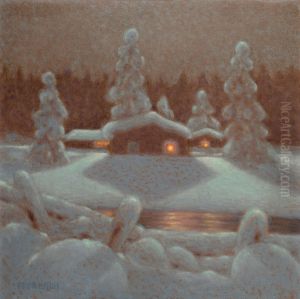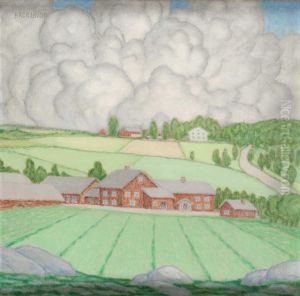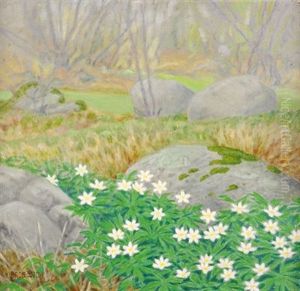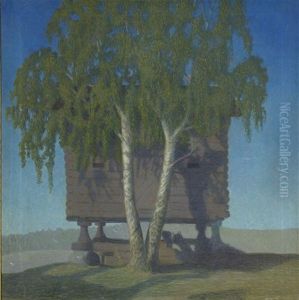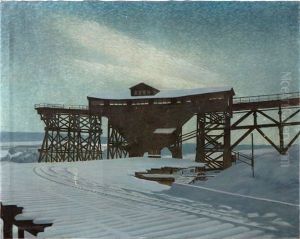Bror Lindh Paintings
Bror Lindh was a Swedish artist, born in 1877 in Stockholm, Sweden. His contribution to art, especially in the realms of painting and sculpture, demonstrates a remarkable blend of traditional techniques and modernist tendencies that were emerging at the turn of the 20th century. Lindh's artistic journey mirrors the broader shifts in European art, as it moved from the academic styles of the 19th century towards more experimental and personal modes of expression seen in the early 20th century. Despite being less widely recognized than some of his contemporaries, Lindh's works offer insightful perspectives into the evolving aesthetic sensibilities of his time.
Lindh's early life was marked by a rigorous artistic education, as was common for artists of his era. He studied at the Royal Swedish Academy of Fine Arts in Stockholm, an institution that played a crucial role in shaping the artistic talents in Sweden. His education there equipped him with a strong foundation in the technical aspects of painting and sculpture, skills that he would later expand upon in his professional career. Following his academic training, Lindh embarked on a series of travels across Europe, a customary practice among artists seeking to broaden their horizons and gain inspiration. These journeys exposed him to a variety of artistic movements and styles, notably Impressionism and Post-Impressionism, which were gaining prominence in France and elsewhere.
Throughout his career, Bror Lindh was known for his versatility, working equally comfortably in the mediums of painting and sculpture. His artistic output includes landscapes, portraits, and allegorical works, often characterized by a keen attention to detail and a vibrant use of color. Lindh's landscapes, in particular, reflect an intimate connection with the Swedish countryside, portraying it with a sensitivity that suggests both a deep love for his homeland and a nuanced understanding of the natural world. In his portraits, Lindh demonstrated an ability to capture not just the physical likeness of his subjects but also their inner life, a trait that endeared him to many of his contemporaries.
The early 20th century was a time of great experimentation in the arts, and Lindh was no stranger to these innovations. While his work remained grounded in the representational traditions he learned at the Academy, he was not averse to exploring the new ideas that were circulating in the art world at the time. This openness is evident in some of his later works, which exhibit a loosening of form and a more expressive use of color, hinting at the influences of modernist movements like Expressionism.
Bror Lindh's contributions to Swedish art were recognized during his lifetime, and he participated in numerous exhibitions both in Sweden and abroad. Despite this, his work has not received the same level of international attention as some of his peers. Nevertheless, his paintings and sculptures continue to be appreciated for their technical skill, emotional depth, and the unique window they offer into the transitionary period of European art between the 19th and 20th centuries. Bror Lindh passed away in 1941, leaving behind a body of work that remains of interest to art historians and collectors who are keen to explore the nuanced developments in Scandinavian art during this era.



